The Discovery of Mineral Wealth in South Africa

The discovery of diamonds and then gold in South Africa brought a rush of prospectors to the country and had significant effects on the history of South Africa, both politically and economically.
Use this printable file folder project, available in English and Afrikaans, to learn all about the discovery of gold and diamonds in South Africa.
Gold & Diamonds
Part 1 – Diamonds
- The Discovery of Diamonds in South Africa
- New Rush/Kimberley
- Mine Labour
- Pulleys
- Big Hole Loses Claim to Fame
- Famous South African Diamonds
- Rocks and Minerals
- Crystals
- Diamonds are Carbon Crystals
- How Diamonds are Formed
- Diamond Cutting
- The Uses of Diamonds
- The Four C’s of Diamond Quality
- Diamonds are Forever?
Part 2 – Gold
- The Discovery of Gold
- Claims
- The Witwatersrand
- Gold
- Gold Mining
- Fool’s Gold
- Panning for Gold
- Hard Rock Mining
- Krugerrands
-
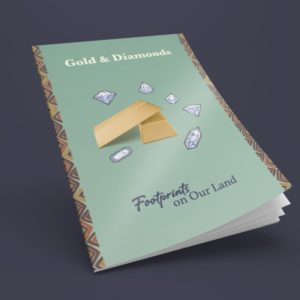 Gold & Diamonds (Download)R100.00
Gold & Diamonds (Download)R100.00
In this ready-to-download ebook, you will find all of the above-listed information about gold and diamonds as well as the printable mini-book templates to make the file folder project.
This project is intended to be used with children between the ages of 7-11 but it can easily be adapted to include both older and younger learners.
It is suitable for both the homeschool situation or for classrooom use.
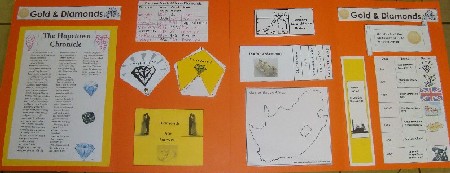
Ten Benefits of Using a File Folder
1. A file folder project will enable your children to work on and review key information about the topic being studied.
2. It will develop auditory and comprehension skills as well as the ability to search, sift and find answers in a written text.
3. The hands-on activities are fun and develop fine motor skills.
4. Children love to learn by doing!
5. The creative possibilities are endless. Children can be creative and add their unique touch to their projects.
6. File folder projects are ideal for multi-level learning.
7. Project packs can be incorporated into unit studies, supplement topics of study or stand alone.
8. A project gives the children a reason for writing and drawing.
9. File folder projects are compact and easy to store.
10. A file folder project can become part of a child’s portfolio of work and are a great tool for reviewing completed work.
BUY NOW
Sample Snippet from the Gold & Diamonds EBook
Part 1 – Diamonds
The Discovery of Diamonds in South Africa
In 1866, a 15 year old boy, Erasmus Jacobs found what was later identified as the first diamond. He picked up this pretty stone on the banks of the Orange River near Hopetown in the Northern Cape.
The farmer on whose land it was discovered, Schalk van Niekerk sent it to Grahamstown where it was identified by a geologist, Dr W. G. Atherstone as a diamond worth about R100 000 today. The 21.25 carat stone was named the Eureka, which means “I have found it”.
Three years later a Griqua shepherd found and even larger diamond and Schalk van Niekerk bought it from him in exchange for some cattle. This diamond became known as the Star of South Africa.
Soon prospectors from all over the world heard about the discoveries and the area was inundated with fortune- hunters. Alluvial diamonds were also found where the Vaal and the Harts River converge (now Barkly West).
New Rush/Kimberley

In 1870, diamond diggers discovered stones at the Bultfontein, Du Toits Pan, and Vooruitzight farms, and in 1871, an 83.50 carat diamond was found on the slopes of Colesberg Kopje. This hill was on the De Beer brothers’ farm, Vooruitzicht.
So many diggers flocked to the area that a tent town named New Rush sprang up. Soon shacks were erected and eventually the town was renamed Kimberley in 1873.
Most of the diamonds were found in a type of rock called kimberlite or ‘blue ground’. Four pipes were discovered all together at the town of Kimberley. In 1872 the pipes were giant open quarries worked by 2500 miners and 10,000 hired laborers.
Colesberg Kopje was soon dug away and as buckets or rock were hauled to the surface by a system of roads and pulleys, the huge hole, known as the The Big Hole was created by human labour.
The diggers formed groups and groups merged into diamond dealing companies.
Cecil Rhodes
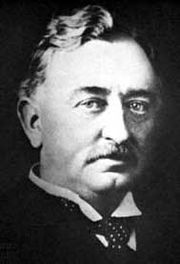
Cecil John Rhodes, who later became prime minister of the Cape, bought up all these companies.
In 1888 he formed the De Beers Consolidated Mines, which is still today one of the world’s greatest mining companies.
The Kimberley Big Hole was the richest source of diamonds yet to be discovered.
The Big Hole yielded over 3 tons of diamonds before it was closed in 1914.
Three of the remaining holes in the Kimberley area, the Du Toitspan, Wesselton, and Bultfontein mines closed in 2005.
Part 2 – The Discovery of Gold
In 1872 gold was discovered on the farm, Spitskop, in the Lydenburg district of the Zuid-Afrikaanse Republiek, by Edward Button. This find brought a rush of miners from around the world.
Shortly after, Pilgrim’s Rest and Barberton also sprang up as mining towns in this area.
In 1877 the British annexed (took over) the Boer republic, but in 1881 the Boers united and launched a rebellion to overthrow the British. This was the First Anglo Boer War.
In 1886 a second, much larger deposit of gold was struck on the Witwatersrand. George Harrison and George Walker discovered the rich gold deposit on the farm Langlaagte (below).
An even greater gold rush resulted and within months a shanty town, accommodating over 3000 people had sprung up.
This was the beginning of Johannesburg, South Africa’s city of gold.
It was later discovered that the gold fields extended into the present day Free State, Mpumalanga and the North West Province in what is called The Golden Arc.

Most of the gold miners were from Britain and were known as ‘uitlanders’ or foreigners. President Kruger of the Zuid-Afrikaanse Republiek (ZAR), refused to give them the right to vote, fearing a second British annexation.
In 1895 a failed attempt was made to overthrow Kruger in what is known as the Jameson raid. Led by British Colonel Jameson, 500 mounted men invaded the ZAR but the Uitlanders did not join the rebellion as planned and so the raid failed.
Cecil Rhodes, who was prime minister of the Cape Colony by this time had supported the raid and was consequently forced to resign his position by the British government.
However, in 1899, war was declared between the Boers and the British once again and the Second Anglo Boer War began.
Purchase Gold & Diamonds
-
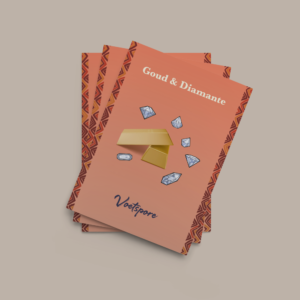 Goud & Diamante (Afdrukbare vouboek)R100.00
Goud & Diamante (Afdrukbare vouboek)R100.00 -
 Gold & Diamonds (Download)R100.00
Gold & Diamonds (Download)R100.00 -
 Footprints on Our Land Notebooking PagesR600.00
Footprints on Our Land Notebooking PagesR600.00
More SA History Lapbooks
Buy more printable lapbook projects to enjoy as you learn about South Africa and the people and events that have played a significant role in the development of our country.
-
 SA History Lapbook Bundle of 9 (Digital)R800.00
SA History Lapbook Bundle of 9 (Digital)R800.00 -
 The 1820 Settlers (Download)R100.00
The 1820 Settlers (Download)R100.00 -
 The South African War (Anglo Boer War)R100.00
The South African War (Anglo Boer War)R100.00 -
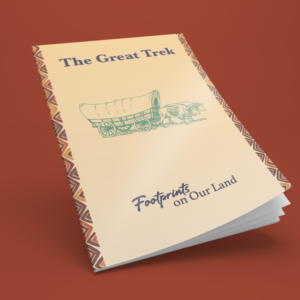 The Great Trek (Download)R100.00
The Great Trek (Download)R100.00 -
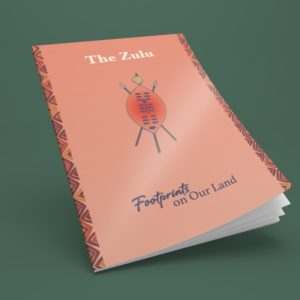 The Zulu (Download)R100.00
The Zulu (Download)R100.00 -
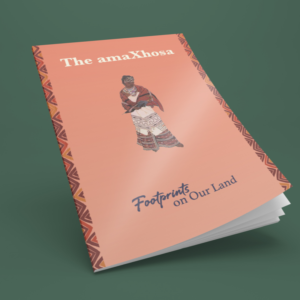 The Xhosa (Download)R100.00
The Xhosa (Download)R100.00 -
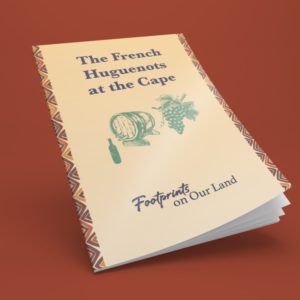 The French Huguenots at the Cape (Download)R100.00
The French Huguenots at the Cape (Download)R100.00 -
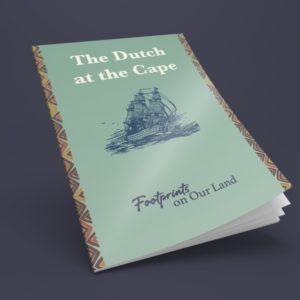 The Dutch at the Cape Lapbook (Download)R100.00
The Dutch at the Cape Lapbook (Download)R100.00 -
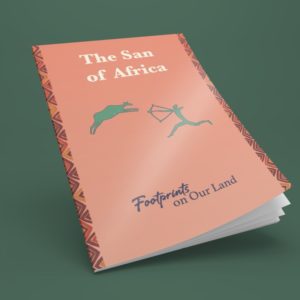 The San of Africa Lapbook (Download)R100.00
The San of Africa Lapbook (Download)R100.00 -
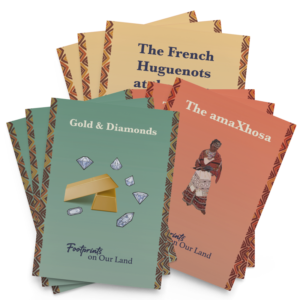 SA History Lapbooks Bundle of 9 on CDR800.00
SA History Lapbooks Bundle of 9 on CDR800.00
